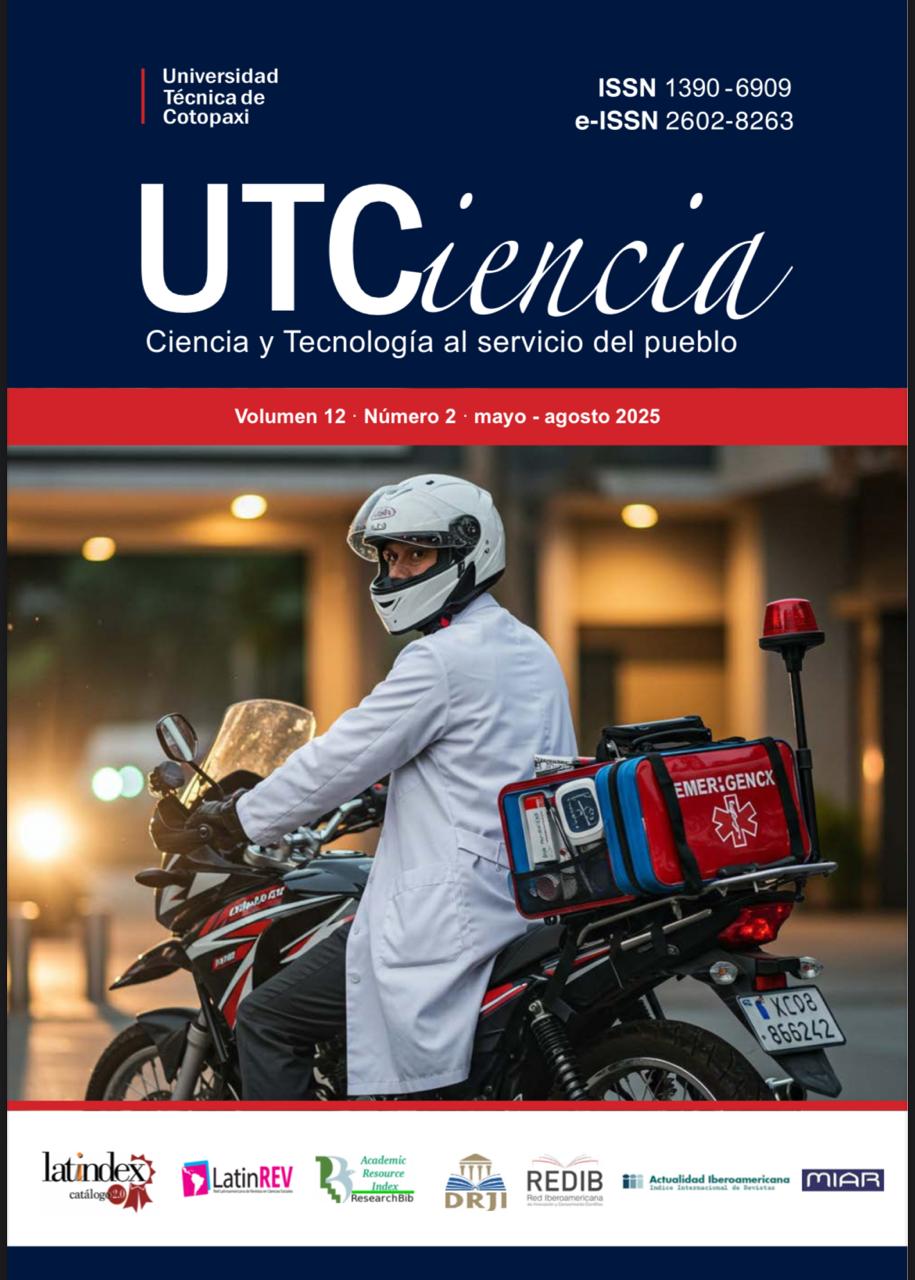Técnicas de monitoreo: Alternativas para la aplicación en el estudio del zorro andino (Lycalopex culpaeus) en Cotopaxi
Abstract
Lycalopex culpaeus reissii, is the largest canid in South America, one of the native species of the páramo, and is also considered a biological indicator of environmental quality. Since there is no information on this species in Ecuador, the objective was to establish the most appropriate monitoring techniques for the study of the Andean fox in the paramos of Cotopaxi province. For this, an analysis and selection of the information available on the internet (repositories, articles, books, manuals, blogs), google academic, PubMed, Web of science, where we used the inclusion criteria based on monitoring techniques for mammals, and studies ranging from 1950 to 2023, using keywords such as: “monitoring”, ‘techniques’, “direct and indirect”, “Andean fox” and “Lycalopex culpaeus”, selecting a total of 48 relevant, pertinent and reliable documents. Therefore, it was concluded that the combination of direct (line transects, capture and camera traps) and indirect monitoring techniques ( footprints, feces, refuges, bones, fur, scratches, burrows, water sources, trails) plus the use of satellite technologies are adapted to the conditions of the páramo to be used in studies on the presence, population density, movements, habits and behavior, This, in turn, contributes to decision-making on policies for the protection of the Andean fox and its environment in the province of Cotopaxi.
Downloads
Copyright (c) 2025 Revista UTCiencia: i-ISSN: 1390-6909. e-ISSN: 2602-8263

This work is licensed under a Creative Commons Attribution 4.0 International License.
Los autores que publican en esta revista están de acuerdo con los siguientes términos:
- Los autores conservan todos los derechos morales y patrimoniales de sus obras, cediendo solamente a UTCIENCIA el derecho a la primera publicación de éste. En consecuencia, los autores pueden realizar otros acuerdos contractuales independientes y adicionales para la distribución del artículo o texto.
- Los autores/as conservarán sus derechos de autor y aceptan la licencia de distribución de UTCIENCIA, la cuál es Licencia de Reconocimiento - Compartir Igual Creative Commons.
- Los autores/as pueden realizar otros acuerdos contractuales independientes y adicionales para la distribución de la versión del artículo publicado en esta revista (p. ej., incluirlo en un repositorio institucional o publicarlo en un libro) siempre que indiquen claramente que el trabajo se publicó por primera vez en esta revista.
- Se permite y recomienda a los autores/as a publicar su trabajo en Internet (por ejemplo, en páginas institucionales o personales) sólo una vez que sean publicados en la revista UTCIENCIA, ya que puede conducir a intercambios productivos y a una mayor y más rápida difusión






